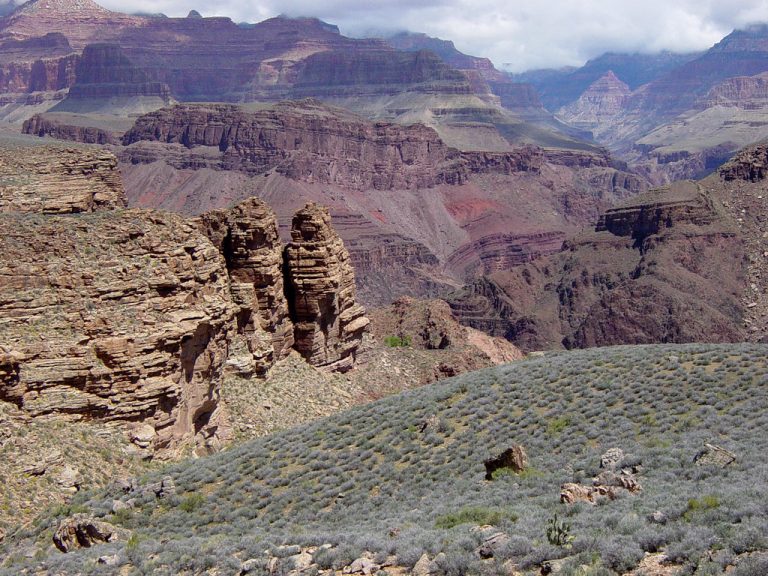By Catherine Swett.
On February 26, 2021, the U.S. House of Representatives passed a bill that would protect nearly 3 million acres of public lands in the West. The Protecting America’s Wilderness and Public Lands Act is a collection of eight different public lands bills, which together would designate 1.5 million acres of public lands as wilderness, as well as add 1,000 miles of river to the Wild and Scenic Rivers System. The bill passed mostly along party lines with a 227 to 200 vote, with Democrats making up 219 of the affirmative votes.
Conserving U.S. Lands
In an executive order signed in January, President Joe Biden committed to conserving at least 30% of the country’s lands and waters by 2030. This is an ambitious goal, as only 12% of U.S. lands are currently protected. To achieve this target, the U.S. will have to find a way to conserve more than 400 million acres within the next 10 years.
Designating public lands as wilderness is one important means of conserving them. The Wilderness Act of 1964 designated 9.1 million acres as wilderness, and it also gave Congress the ability to make additional wilderness designations. The Act prohibits the operation of commercial enterprises in wilderness areas, with some exceptions. These exceptions include recreational services, grazing of livestock, and developing water resources. While mining is generally prohibited, the Act allows mining for mineral claims filed before December 31, 1983. But overall, any lands designated as wilderness are meant to be preserved “in their natural condition” and “untrammeled by man.”
Similarly, the National Wild and Scenic Rivers System preserves rivers that “possess outstandingly remarkable scenic, recreational, geologic, fish and wildlife, historic, cultural or other similar values.” Once a river is designated as wild and scenic by Congress, it is protected in its free-flowing condition. While the system does not affect existing water rights, it does try to limit instream activities that might harm the river’s natural condition.
Both the Wilderness Act and National Wild and Scenic Rivers System provide the basic legislative tools to meet President Biden’s ambitious “30 by 30” conservation goal, which aims to conserve 30% of U.S. lands by 2030. Indeed, the recent Protecting America’s Wilderness and Public Lands Act applies both systems to conserve vast regions of the West.
Protecting America’s Wilderness and Public Lands Act
The Protecting America’s Wilderness and Public Lands Act incorporated eight separate bills, conserving public lands in California, Colorado, Washington, and Arizona. Legislators have been developing these bills for years, but none saw any success under the Trump administration. Now, with support from the Biden administration, Democrats are moving forward with their environmental conservation agenda.
This legislation includes bills with specific conservation plans for each state. Four of the bills will conserve public lands in California: the Northwest California Wilderness, Recreation, and Working Forests Act; Central Coast Heritage Protection Act; San Gabriel Mountains Foothills and Rivers Protection Act; and Rim of the Valley Corridor Preservation Act. These bills would create a 400-mile-long trail to connect existing wilderness areas in Northern and Southern California. They would also designate an additional 305,500 acres as wilderness in the state’s northwest region, and they would expand conservation in the southern Santa Monica Mountains and San Gabriel Mountains.
Colorado would also see a large expansion of its wilderness area under the Colorado Wilderness Act and the Colorado Outdoor Recreation and Economy Act. The bill would designate 660,000 acres of public land as wilderness. And in Washington, the Wild Olympics Wilderness and Wild and Scenic Rivers Act would add more wilderness in the Olympic Peninsula, in addition to designating 460 miles of river as part of the National Wild and Scenic Rivers System.
In Arizona, the Grand Canyon Protection Act would permanently ban new mining on more than 1 million acres around the Grand Canyon. The area was already temporarily protected under an Obama-era moratorium, but recent efforts to increase mining threatened the conserved land. Arizona legislators are interested in conserving the areas around the Grand Canyon because it is such an important draw for tourism, and several Arizona tribes and environmental groups also supported the Act. In particular, the Havasupai Tribe feared that continued uranium mining would contaminate the aquifer they rely on for their drinking water supply.
Republican opposition to the Protecting America’s Wilderness and Public Lands Act argued that these conservation bills go too far, and that they prevent the country from accessing valuable resources. They also claimed that limiting access to these lands will hinder firefighting abilities. However, the version that passed the House did adopt a Republican-proposed amendment that would require a study to determine whether the conserved lands contain geothermal resources or minerals needed for a variety of renewable energy technologies.
In sum, if the Protecting America’s Wilderness and Public Lands Act passes the Senate and is enacted, it will be an important step towards meeting President Biden’s environmental conservation goals. While the bill will most likely face further opposition, on the whole it does have widespread and diverse support.

